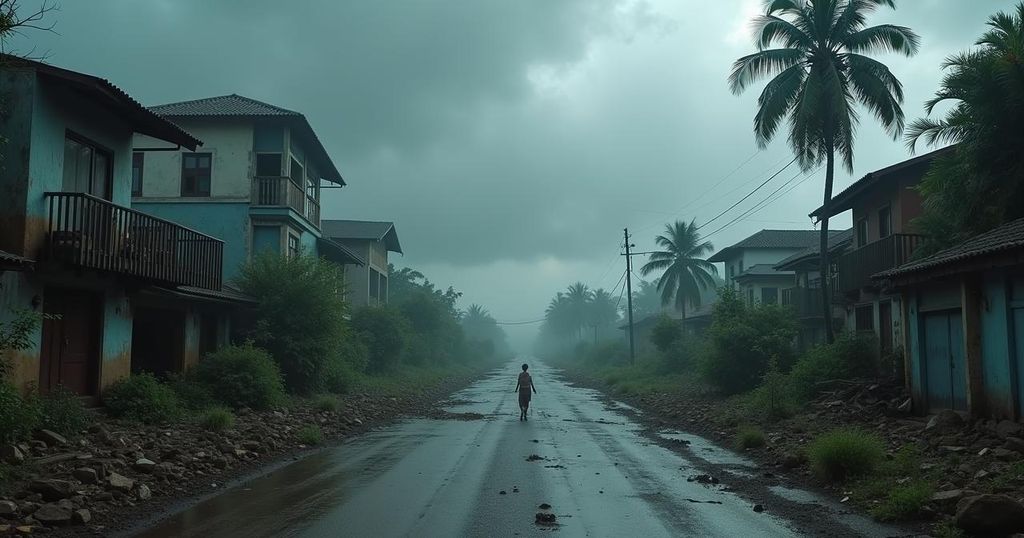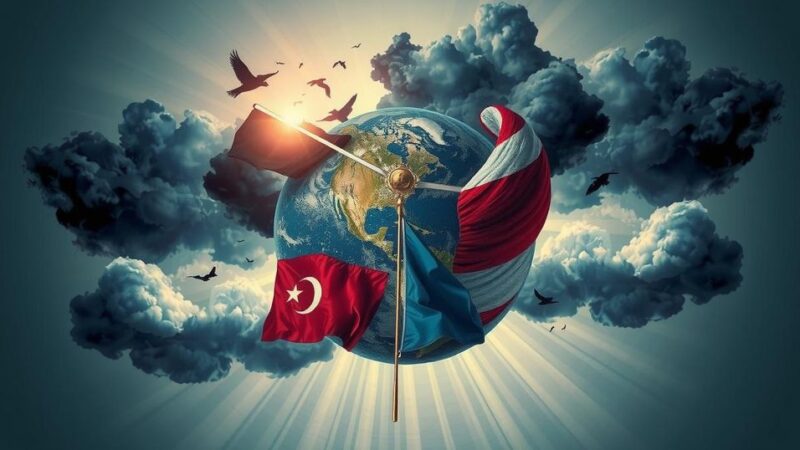At least eight deaths have been reported as violent storms swept through Brazil, causing winds of up to 100km/h and significant rainfall. The storm has led to widespread power outages affecting over 1.3 million homes, particularly in São Paulo, as residents protest the lack of electricity. While the storm has caused destruction, it is seen by some as relief from a record-setting drought that has persisted for over 165 days.
Recent violent storms have swept across Brazil, resulting in the deaths of at least eight individuals and leaving thousands without power. As reported by the National Institute of Meteorology, strong winds reaching speeds of up to 100 kilometers per hour (approximately 60 miles per hour) and daily rainfall accumulating to 10 centimeters (4 inches) have severely impacted the central and southeastern regions of the country. Seven fatalities occurred in São Paulo, Brazil’s most populous state, primarily attributed to falling trees and damaged infrastructure due to the inclement weather. Residents in southeastern Brazil described the unexpected rainfall as intense but brief. Large areas of São Paulo state have experienced widespread blackouts since Friday, with reports also indicating issues with water supply. Enel, the energy company responsible for the region, has confirmed that more than 1.3 million residences and businesses remain without electricity, although they anticipate restoring power by Monday. In a display of public dissent, residents of the Parque São Roberto neighborhood staged a pot-banging protest on Saturday after enduring over 24 hours without electricity. Furthermore, the storms had lethal consequences in Brasilia, where one soldier tragically lost his life and another was injured at the military police headquarters. Local media reported that the rain was so heavy that officials within the Chamber of Deputies, Brazil’s lower congressional house, were compelled to utilize umbrellas inside the building to shield themselves from leaking water. Despite the devastation, many citizens in Brasilia welcomed the storm, viewing it as much-needed relief following a record-setting dry spell of more than 165 days without rain. Brazil has recently faced its most severe drought since record-keeping began, a situation experts have largely ascribed to climate change and the El Niño phenomenon. The prolonged dry conditions have exacerbated wildfires, inflicting severe damage on the Amazon rainforest and Pantanal wetlands, and producing hazardous smoke that has enveloped major urban areas. Government statistics indicate that wildfires in the Amazon surged to an alarming two-decade high for July.
Brazil is currently grappling with an unprecedented climate crisis that has manifested in both extreme drought and violent storms. The country recently endured its worst drought on record, attributed mainly to climate change coupled with the effects of the El Niño weather pattern. This prolonged dry period has not only harmed agriculture but also led to catastrophic wildfires, particularly in the Amazon region, causing significant environmental degradation and air quality issues in urban centers. The recent storms, although destructive, have provided some relief from the drought conditions that have gripped the region for months. The sudden weather shift highlights the volatility of Brazil’s climate and the potential impacts of changing weather patterns on its populace and environment.
In summary, the violent storms that recently struck Brazil have resulted in significant loss of life, widespread power outages, and infrastructure damage, particularly in São Paulo. While these storms have brought much-needed rain after an extended drought, the situation remains dire for many residents who continue to face the aftermath of severe weather events. Furthermore, the worsening climatic conditions pose ongoing threats to Brazil’s environment and public safety, emphasizing the urgent need for comprehensive measures to address climate change and its associated risks.
Original Source: www.bbc.com






